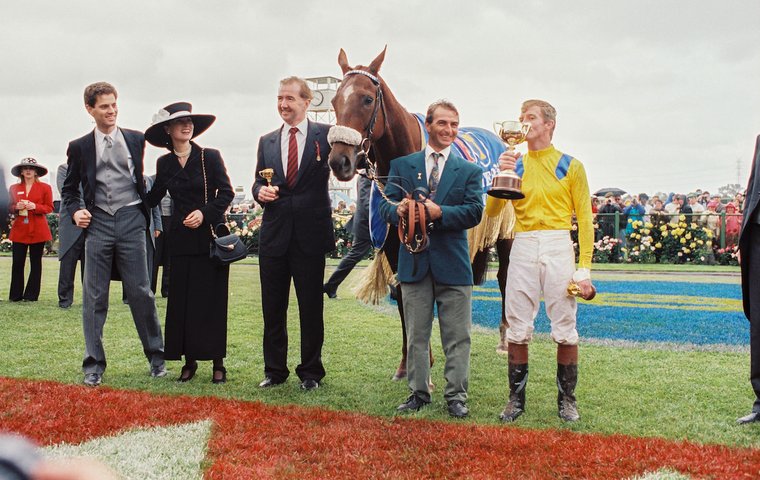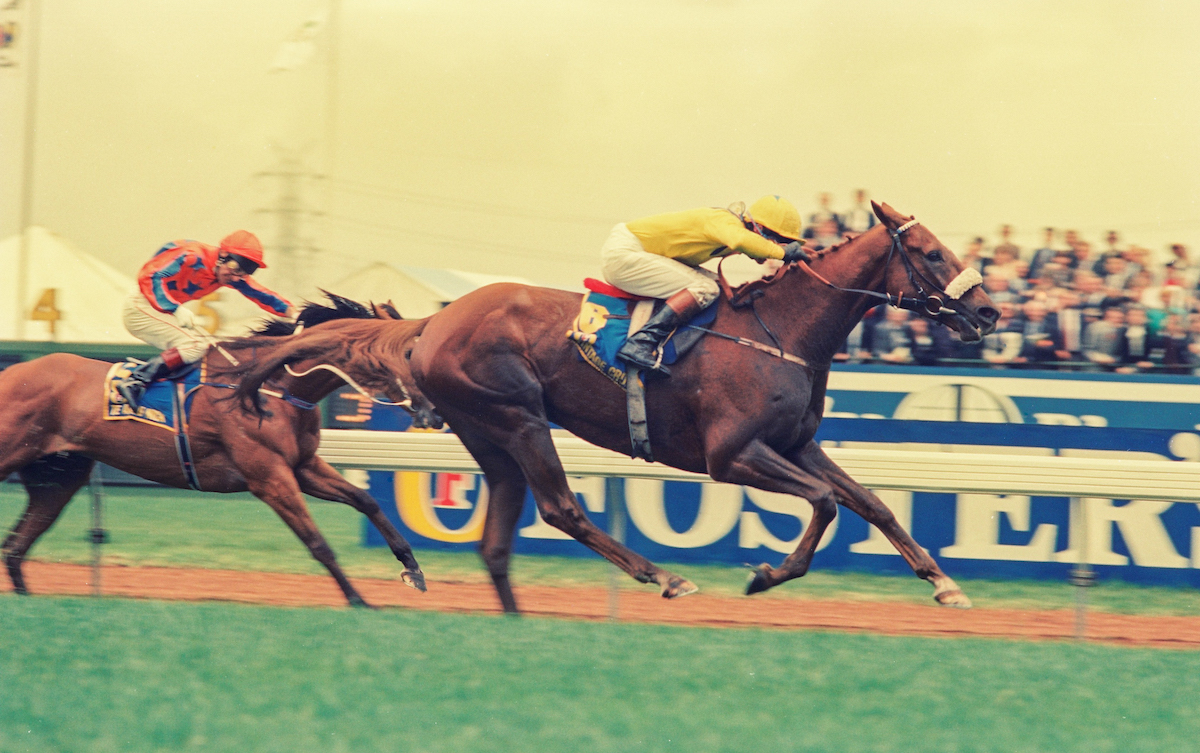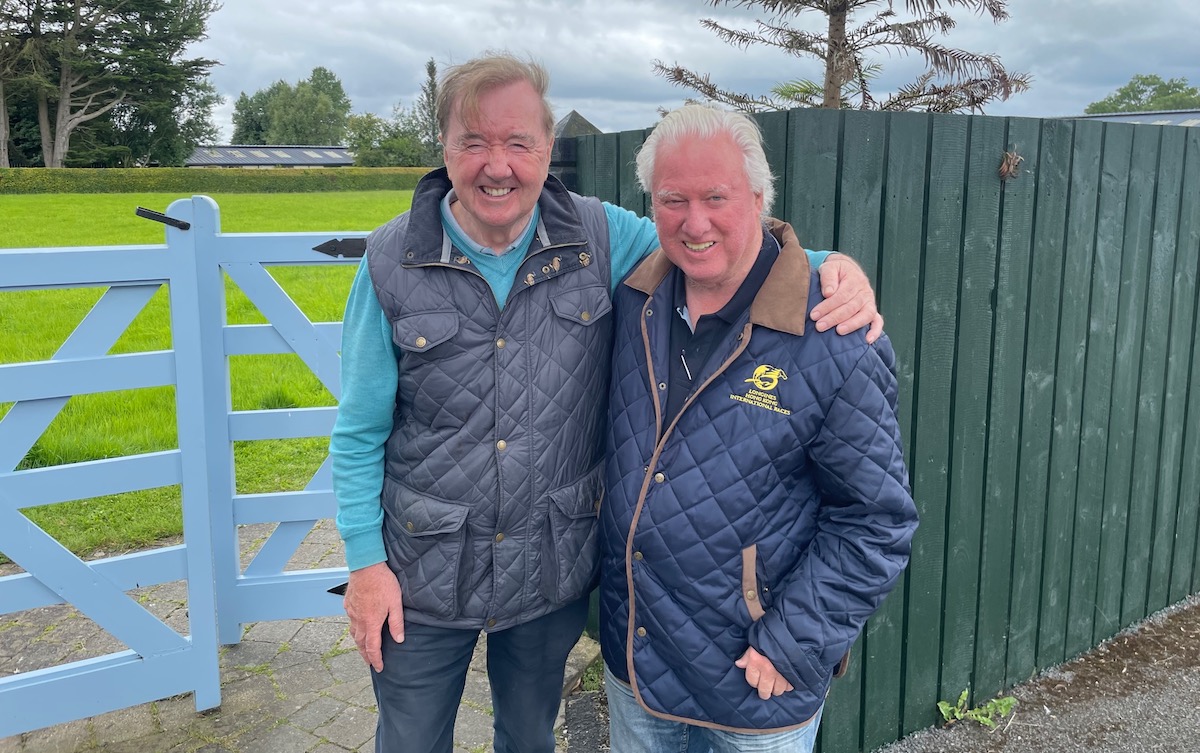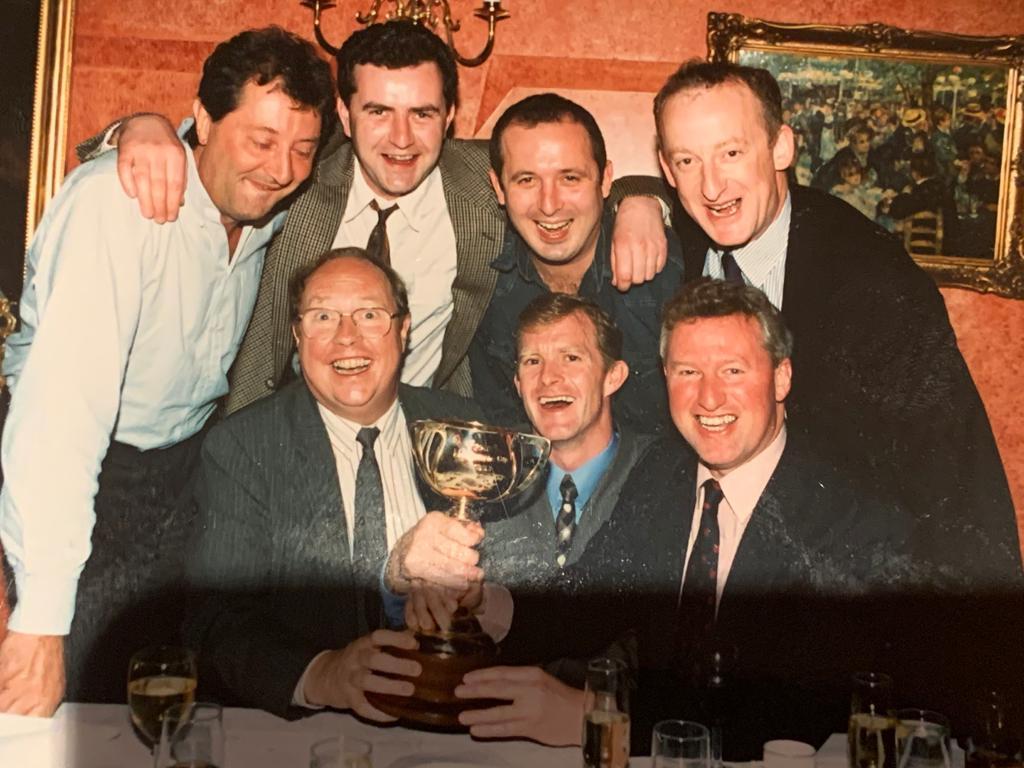
On the 30th anniversary of a pioneering success in Australia’s most celebrated race, JA McGrath with his memories of a ground-breaking victory for the Irish stayer under Mick Kinane
Bart Cummings thought he was hearing the latest Irish joke when told there was a trainer from County Kildare bringing a horse halfway across the world in an attempt to win the Melbourne Cup – and that the horse in question had not run for nearly seven weeks.
“Madness!” declared Cummings, the acclaimed ‘Cups King’ who would finish his career with 12 Melbourne Cups to his name plus sundry others.
What is more, Cummings not the only one of that opinion. Other Cup-winning trainers were of like mind. David Hayes said the overseas challenge “couldn’t be taken seriously” while Lee Freedman declared “they won’t be competitive”. John Meagher was slightly more diplomatic. “They are good horses but it’s different over here,” he offered.
However, those who had for several years watched Dermot Weld building an international reputation from his Rosewell House stables on the Curragh knew he was a trainer never to be underestimated. They knew he was up to something with Vintage Crop, and consequently at home in Ireland there was respect rather than ridicule for the challenge.
In racing’s modern era, travelling horses thousands of miles to race in other countries is commonplace. There are still hoops to be jumped through, with factors such as quarantine, air travel and acclimatisation in a different season in another hemisphere to be taken into account.
But it is all do-able these days and we see it occurring, regularly. In Australia in the 1990s, there were different ways, different traditions. And, unlike today, there had been no international factor to work onto the Melbourne Cup equation. Prior to 1993, no horse trained outside Australia or New Zealand had ever been shipped in to have a crack at Australia’s greatest race.
Passed down through generations
Locally, it had long been ingrained in trainers, and as a consequence their owners, passed down through generations, that the essential prerequisite to success in the two-mile Melbourne Cup – for 163 years Australia’s most treasured sporting prize – the winner would need to have the fitness foundation of at least 10,000 metres (approx 6.2 miles) in their legs, clocked up in preparation races in the preceding months.
Also, it was the accepted norm that the last of those prep races would be three days before the Cup, almost certainly in the then G1 Mackinnon Stakes, at weight-for-age over 2,000 metres (a mile and a quarter), or the Hotham Handicap (also later billed as the Dalgety, the Saab, the Lexus, and various other sponsorship guises), over 2,500 metres (a fraction over a mile and a half).
It was commonplace to see around 20 of the 24 Cup runners competing on the Saturday at Flemington only 72 hours before their target race. But in the 3m23.4s it took to run the 1993 Melbourne Cup, with the Irish raider Vintage Crop winning it, everything changed. More than 100 years of universally accepted training methodology went out the window.
Weld was not a madman, as some locals had thought. He was a pioneer, who changed Australia’s iconic race forever.
Opening the floodgates
The floodgates were open. In the past 30 years from 1993 to 2022, there have been 179 overseas runners for nine winners (Ireland 4, France 2, Germany 1, Japan 1, UK 1).
Weld had been making enquires about sending a horse to Melbourne the previous year but quarantine protocol proved too difficult and the idea was put on hold. He had entered Vintage Crop for the 1992 Melbourne Cup before the gelding destroyed a big field of extreme stayers by eight lengths in the Cesarewitch, the famous Newmarket handicap. Clearly, the trainer knew what he had.
A horse’s profile is always taken into account by the handicapper when framing weights for the Cup, and Vintage Crop, being fairly typical of the type Weld looks for, had won two races over hurdles in addition to some impressive form on the Flat.
He was also sixth in the Champion Hurdle at Cheltenham. In retrospect, there seems little doubt, some lenience was permitted for his jumping profile.
Michael Smurfit, Vintage Crop’s owner, must have been convinced Weld had found him the right horse, for he ran in the Champion Hurdle as well as the Irish St Leger, both races carrying the Smurfit sponsorship.
Weld, the son of a trainer, had grown up in Irish racing watching the dominance of two legends of the game in Vincent O’Brien and Paddy Prendergast and quickly understood that he would need to achieve something very different to make his mark.
Befitting the times at the end of last century, that difference manifested itself as international racing.
Weld, now 75, has long campaigned his horses worldwide, forever seeking bigger and more prestigious races. He was one of the first wave of overseas visitors to the Far East, winning the seven-furlong Hong Kong Bowl with Additional Risk in 1991, a forerunner to the Hong Kong International Races, run each December at Sha Tin.
He also famously became the only European trainer to land a leg of the American Triple Crown, winning the 1990 G1 Belmont Stakes with Go And Go, a young horse he accidentally discovered had a telling prowess on dirt when he won the 1989 Laurel Futurity, switched to the dirt when the turf track was left saturated after heavy rain.
Weld has trained the winners of all the Irish Classics, most multiple times, as well as sending out three British Classic winners. He has trained over 3,000 winners and been Irish champion trainer 21 times.
But it was in Melbourne, 30 years ago, that he truly established his reputation as a ground-breaker. Maybe not the stuff of Scott of the Antarctic but, in a racing context, every bit as pioneering and adventurous.
Under the radar
The build-up to the 1993 Melbourne Cup was front and centre about the British stayer Drum Taps, the dual Ascot Gold Cup winner, trained by Lord Huntingdon and ridden by Frankie Dettori. Vintage Crop sailed in under the radar, much to the delight of his Irish connections.
Dettori was in his element, soaking up the attention in the pre-race interviews and debate, with much of the spotlight-hogging due to the late arrival of Vintage Crop’s jockey Mick Kinane, who was riding in Hong Kong at the time. William Huntingdon, a royal trainer and nobility to boot, was always a fascination to the local media.
The more intense the focus on the English challenger, the more he shortened in betting. At the off, Drum Taps was 6-1 second favourite, with Vintage Crop sent off at 14-1.
The puzzling feature of the market was that Vintage Crop had finished 9¾ ahead of Drum Taps — at level weights — when winning the Irish St Leger at the Curragh just under seven weeks earlier and now met him 7lb better.
There have been few big-race riders in the world with the experience and the cool head of Mick Kinane and those qualities shone through as the Irishman guided Vintage Crop through the field to a historic victory.
 As Cups go, it was fairly straightforward. He won by three lengths from 160-1 outsider Te Akau Nick, trained by Gai Waterhouse, with Mercator at 125-1 a half head away in third. Drum Taps finished ninth.
As Cups go, it was fairly straightforward. He won by three lengths from 160-1 outsider Te Akau Nick, trained by Gai Waterhouse, with Mercator at 125-1 a half head away in third. Drum Taps finished ninth.
A deluge on the morning of the race had threatened the meeting, with officials fearing they would be forced to postpone the Cup to later in the week. Car parks were flooded and the track itself, though fast-drying with excellent drainage, took several inches of rain to the extent that the going was officially posted as ‘heavy’, later adjusted to a reading of ‘track slow’ – though Kinane later said it would have been considered ‘good to yielding’ in Ireland.
What needs to be remembed is that Vintage Crop was a seriously good racehorse. He won 16 races, including two Irish St Legers and a Cesarewitch. He also finished seventh in the 1994 Cup, running only a week after gashing his leg when hitting a running rail; the wound required 14 stitches. He was also third in the 1995 Cup.
In all the post-race excitement, with the winner’s enclosure abuzz, Vintage Crop stood stock still. He did not move. He had endured the travelling, a stark change of environment, and then his supreme test. He had given everything that day.
Kinane later said he had ridden only two horses in his career to that point who had given every last ounce in a race. Theatrical was one, and Vintage Crop in the Cup was the other.
 Vintage Crop was retired to the Irish National Stud (though not for covering duties) where he became a tourist attraction, visited by thousands of fans, the majority from Australia and New Zealand, who came to admire his toughness and courage.
Vintage Crop was retired to the Irish National Stud (though not for covering duties) where he became a tourist attraction, visited by thousands of fans, the majority from Australia and New Zealand, who came to admire his toughness and courage.
He died in July 2014, forever remembered as a game-changer in Australian racing.
Please excuse this blatant indulgence
It is a great annoyance to hear racing commentators, pundits or journalists boasting to their public that “I’ve had a few quid/dollars on this”. I suppose this is meant to give the poor viewer/reader added confidence, very much like the sign in a French restaurant proclaiming ‘Le patron mange ici’.
It is something I personally detest – But just this once, I hope you will excuse me this blatant indulgence.
Press coverage of the 1993 Melbourne Cup was vast, surpassing previous years in which the odd few paragraphs might appear in the daily newspapers in Britain and Ireland, with marginally more space devoted to the race in the trade press.

After the first couple of races, we gathered on the edge of the mounting yard. O’Hehir is an expert ‘Weld-watcher,’ which is the knack of deciphering the comments made pre-race and interpreting the body language of the trainer. O’Hehir said to the assembled gathering: “I think he really thinks this will win.”
The words had only just left his mouth when Robin Parke came around the corner and said: “There’s a bookie at the back of the main ring going 20-1 Vintage Crop – and I’m on !”
Parke had travelled down from Hong Kong on the same flight as his good friend Mick Kinane and it is reasonable to assume they would not have been discussing the weather trends in the Pacific Ocean on their journey to Australia.
With that double confirmation, the press corps rushed off to the betting ring, backing Vintage Crop to a man. There was no 20-1 left but 16-1 the Cup winner was welcomed by all. (Again, my apologies for the indulgence.)
Weld, for his part, relishes telling the story of the young Irishman he met, who had emigrated to Australia and fallen on hard times.
The patriotic young man gathered what money he had left – and borrowed more – to back Vintage Crop.
“He came up to me after the race and shook me by the hand,” said Weld. “He said he had won enough to pay off his house and get back in the black.”
There are probably many similar stories relating to that memorable day.
• Visit the Victoria Racing Club website
‘He is the perfect horse’: Japanese superstar Equinox confirms world #1 status with track record
View the latest TRC Global Rankings for horses / jockeys / trainers


